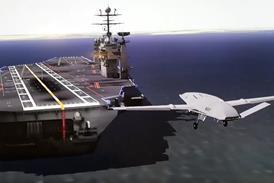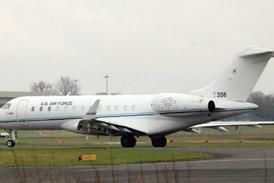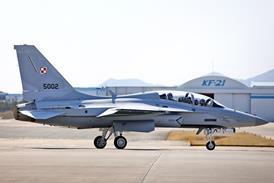Eclipse Aviation president and chief executive Vern Raburn envisages jet air taxis that can be flown legally with a crew of one pilot - in Europe as well as the USA - using an automatic or remote aircraft recovery system in the event of pilot incapacitation.
On the other hand, at the last National Business Aviation Association conference and exhibition, insurance experts suggested that single-pilot commercial operations with very light jets are unlikely to be considered an acceptable risk by insurers despite technological advances to make the latest generation of aircraft easier and safer to fly.
Insurance risk
This was the consensus at an aviation insurance and risk management seminar at the show. The participants heard from underwriters that although the single-pilot operation of business jets for corporate or private transport has been considered an acceptable insurance risk since Cessna introduced the Citation range, it was not deemed viable for commercial operations. Brint Smith, senior vice-president private client services at Marsh and McLennan, said that the decision to take on a single-pilot operations risk in any market sector depends heavily on the underwriter's assessment of the pilot's experience, training records and the type of operations normally performed.
Although many very light jet operators will be owner-pilots, the largest proportion of buyers are expected to be air taxi firms and companies that already operate business jets, according to manufacturers attending EBACE this year. Speaking at the show, Raburn said that the state-of-the-art integrated cockpits and simple systems designed into VLJs like the Eclipse 500 have been configured to be flown by one pilot. The only reason to require them to be crewed by two pilots, said Raburn, is the possibility of pilot incapacitation. But this problem will eventually be overcome, he predicts, by installed systems that can fly the aircraft to a safe airport either automatically or by being remotely piloted. He added that the technology already exists to do it, and it is merely a question of getting it approved and certificated.
Diamond Aircraft's chief executive Christian Dries agrees with Raburn's prediction of the emergence of "get-me-home" technology to cope with pilot incapacitation in VLJs and other personal aircraft, but he puts a date on it - 2008. Dries said he expects Diamond types, including the DA42 piston twin and possibly the D-Jet microjet, to be offered with an auto-recovery/landing option by 2008.
He said it would only require an autopilot to be coupled with the GPS/wide area augmentation system-based flight management systems on flightdecks with integrated avionic suites such as Garmin's G1000. "We will be able to do this in the future," said Dries. "It may take two and a half years, but if we can land a DA42 with it, we could land a D-Jet." Diamond's venture with German defence electronics company Rheinmetall to develop an unmanned aircraft, the DA42-based optionally piloted surveillance and reconnaissance system, will allow it to experiment with auto-recovery systems, says Dries.
Dries is sceptical about the use of aircraft parachutes as a last-ditch safety system, but plans to offer them on the DA42 when it goes on sale in North America. He believes, however, that auto-land technology would make buyers feel safer. "If a guy is flying with his family, they know that if he has a heart attack, all the passenger has to do is press a button and the aircraft will land itself at the nearest available airport," he says.
Meanwhile, another safety system scarcely used in the sector as yet may become common as a result of Eclipse Aviation's decision to make flight operations quality assurance (FOQA), known in Europe as flight data monitoring (FDM), a part of the package that owners get with the aircraft.
Data processing
Eclipse's Chris Solan explains that the manufacturer will act as if it were "the airline" for the Eclipse 500 fleet, gathering and processing FDM data from all participating users, enabling it to advise customers of everything from individual exceedences to fleet-wide trends. Although the manufacturer has mapped out all the detail of how it will be done, the system is not ready to implement yet, and as Flight International went to press Eclipse was not able to indicate when it will be.
Source: Flight International























